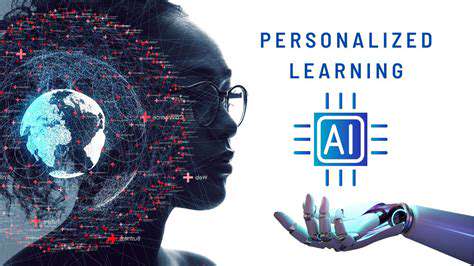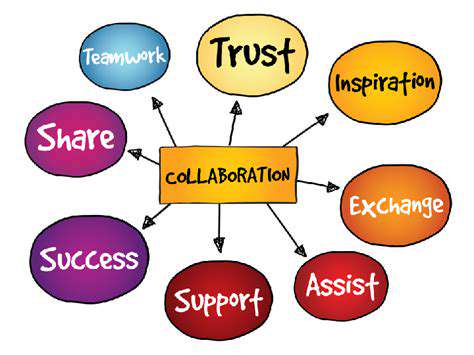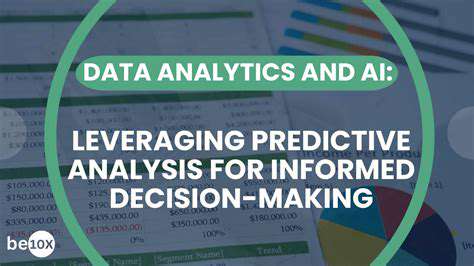The Necessary Infrastructure: 5G's Role in Supporting Metaverse Experiences
When we think about the metaverse, we often imagine vibrant digital worlds where every action feels instantaneous. What makes this possible? The answer lies in 5G networks with their remarkable ultra-low latency and expansive bandwidth. These technical capabilities allow virtual environments to respond to user inputs without noticeable delay, creating that crucial sense of presence. Unlike earlier network generations, 5G can effortlessly handle multiple high-definition streams simultaneously - whether it's rendering complex avatars, detailed 3D environments, or live virtual events. This technological leap represents more than just faster speeds; it enables entirely new forms of digital interaction that blur the line between virtual and physical spaces.
However, building this digital future requires more than just advanced technology in urban centers. The metaverse's true potential can only be realized through comprehensive 5G deployment that reaches rural communities and underserved regions. Network architects must design systems capable of supporting millions of simultaneous users across diverse applications - from massive virtual concerts to precision-based collaborative workspaces. Without this inclusive infrastructure approach, the metaverse risks becoming another technology limited to privileged locations rather than the democratized digital frontier it promises to be.
Beyond the Basics: 5G's Advanced Capabilities for Enhanced Metaverse Experiences
What truly sets 5G apart are its sophisticated network management features. Network slicing represents a game-changer, allowing providers to create optimized virtual networks for specific metaverse applications. Imagine dedicated network segments for latency-sensitive virtual surgeries coexisting with bandwidth-rich channels for immersive gaming - all on the same physical infrastructure. This flexibility ensures critical applications receive priority while maintaining quality across all services.
Edge computing completes this technological symphony by dramatically reducing latency through localized data processing. Instead of sending information across continents to centralized servers, computations happen geographically closer to users. For metaverse applications requiring real-time interaction - whether it's a virtual handshake that feels authentic or a multiplayer game where milliseconds determine outcomes - this proximity makes all the difference. These aren't incremental improvements but fundamental enablers that transform the metaverse from conceptual possibility to practical reality.
Beyond Bandwidth: 5G's Impact on Latency and Reliability
Latency: A Critical Factor for Immersive Experiences
Consider the subtle but crucial timing of human interaction. When we converse, even slight delays disrupt natural flow. The metaverse demands similar temporal precision. 5G's sub-10ms latency makes digital interactions feel effortlessly natural, whether you're passing a virtual object to a colleague or dodging in-game projectiles. This responsiveness transforms sterile digital environments into spaces where users forget they're interacting through technology at all.
Reliable Connectivity: Ensuring Stability in the Metaverse
Nothing disrupts immersion like connection drops during crucial moments. 5G introduces advanced error correction and network redundancy that maintains stable connections even in challenging conditions. This reliability builds user confidence - whether they're presenting in a virtual boardroom or competing in esports tournaments where milliseconds and consistency determine outcomes.
Enhanced Data Capacity: Supporting Complex Virtual Worlds
Modern virtual environments generate staggering amounts of data - from 4K textures to complex physics simulations. 5G's expanded capacity ensures this data flows uninterrupted, preventing the visual artifacts and loading delays that shatter immersion. This capability becomes particularly crucial as metaverse graphics approach cinematic quality, requiring seamless streaming of increasingly detailed assets.
Improved Network Scalability: Accommodating a Growing User Base
The metaverse's value proposition depends on network effects - more participants create richer experiences. 5G's architecture anticipates this growth with dynamic resource allocation that automatically scales to meet demand. This elasticity ensures consistent performance whether a virtual venue hosts dozens or millions of simultaneous visitors.
5G and the Evolution of AR/VR: A Symbiotic Relationship
Augmented and virtual reality technologies have existed for years, but 5G unlocks their full potential. With sufficient bandwidth and minimal latency, AR overlays can update in perfect sync with real-world movement, while VR environments achieve unprecedented realism. This technological synergy enables applications ranging from precision augmented reality maintenance guides to fully immersive virtual training simulations.
Powering Immersive Experiences: 5G and High-Fidelity Graphics

5G: Revolutionizing Connectivity
The shift to 5G represents more than an incremental upgrade - it's a fundamental reimagining of connectivity. By combining gigabit speeds with near-instantaneous response times, 5G enables applications that were previously impractical. Remote surgery becomes viable when latency drops below tactile feedback thresholds, while cloud gaming achieves console-quality performance on mobile devices. These capabilities form the backbone of next-generation digital experiences.
Transforming Industries
While consumer applications capture headlines, 5G's most profound impacts may emerge in industrial settings. Manufacturers gain real-time visibility across global operations through connected sensors, while logistics companies optimize fleets with instantaneous data analytics. In healthcare, high-bandwidth connections enable specialists to guide procedures remotely with holographic precision. These applications share a common thread - they transform industries by making physical constraints irrelevant.
The Future Landscape: Challenges and Opportunities
Technological Advancements and Infrastructure
Realizing the metaverse vision requires parallel advancements across multiple domains. Network infrastructure must evolve beyond current 5G deployments to support the data density of persistent virtual worlds. This demands innovative approaches to spectrum allocation, small cell deployment, and edge computing architecture. Simultaneously, content creation tools need to evolve, enabling developers to build increasingly complex environments without exponentially increasing bandwidth requirements.
User Experience and Accessibility
As technical capabilities advance, design challenges become paramount. Creating intuitive interfaces for three-dimensional digital spaces requires rethinking fundamental interaction paradigms. Accessibility presents another critical frontier - ensuring those with disabilities can fully participate in virtual environments through adaptive interfaces and assistive technologies. Addressing these challenges early will determine whether the metaverse becomes an inclusive digital commons or fragments into walled gardens.











